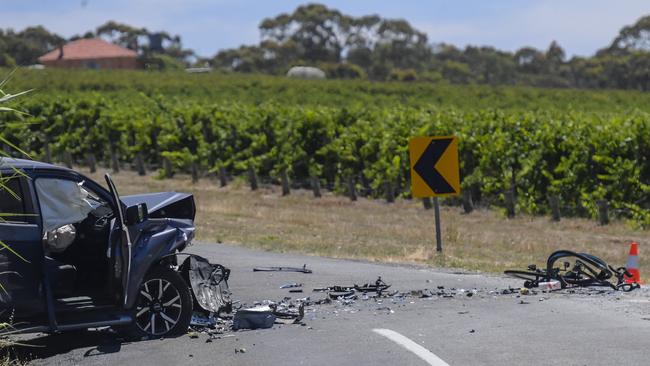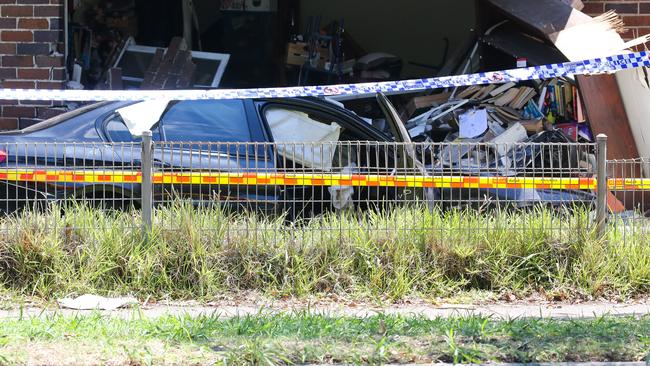Australia road toll: 2024 marks worst period since 1960s
Australia broke an unwanted record at the end of 2024 and it’s time to do something about it.
Motoring
Don't miss out on the headlines from Motoring. Followed categories will be added to My News.
Australia is facing its worst road safety crisis in decades, with the national road toll rising for the fourth consecutive year – the first time this has occurred since the 1960s.
Up to 1318 people died on Australian roads in 2024 despite modern vehicle safety advancements and significant investments in infrastructure.
National Transport Research Organisation (NTRO) transport infrastructure safety leader Emily McLean warned the situation was worsening as road deaths climbed.
“Despite significant reductions in road trauma in recent years, we have had four consecutive years of rising deaths, and the rate of increase is increasing each year,” she said.
The latest data reveals a harrowing reality – more than three people die and more than 100 others suffer serious injuries on Australian roads every day.
MORE:Shock EV move: Chinese giant blacklisted
South Australia recorded 91 lives lost and 845 people seriously injured in 2024.
Queensland had the most severe road trauma in 15 years with a toll of 302 fatalities.
Western Australia recorded 185 deaths, the highest in the state since 2016.
McLean said national data (from 2022, being the latest available) showed concerning patterns in the road toll, with regional and remote areas heavily impacted.
“Nationally there has been a significant investment in improving infrastructure on state and territory roads, but local government roads are often left behind,” she said.
“Local Government roads account for just over half of all casualties and 40 per cent of all road deaths, yet do not have the same level of funding and support.”
MORE:The ‘mega truck’ dividing Aussies

MORE: ‘Burn it’: Nissan slammed over dud move
National data from 2022 showed the highest-risk groups on Australian roads included male drivers aged 40-64, with fatalities most commonly occurring in single-vehicle crashes on roads with speed limits of 100 km/h or greater.
While vehicle technology has advanced significantly, McLean said key safety features often remain out of reach for many Australian drivers due to affordability issues.
“Vehicle safety has improved in recent years, but often is not available in the base model, or sometimes is even removed to reduce vehicle costs for the Australian market,” she said.
She added that older vehicles remained a critical factor in road deaths, with the average age of Australian vehicles being 11 years old and those vehicles being more likely to be involved in road deaths.

“Older vehicles are typically not equipped with modern safety features including advanced warning systems such as forward collision warning, lane departure warnings and assisting systems, such as adaptive cruise control, lane keep assist, and autonomous emergency braking,” she said.
McLean said Australians should consider vehicle safety ratings when purchasing their next car and can visit ANCAP website to check safety ratings.
Driver complacency is also a factor, McLean said complacency was also a factor in the death toll and, while safety technology can prevent crashes, it is not a substitute for responsible driving behaviour.
“Even with advancements in autonomous driving, a driver is still considered to be in charge of the vehicle. Roads are a high-risk environment and it’s important for people to slow down and remember that their decisions on the road can lead to their death or the deaths of others,” she said.
The “Fatal Five” – speeding, drinking and drug driving, distraction, fatigue and not wearing seatbelts – remain the primary factors in the rising death toll.
“These are all avoidable behaviours that pose a crash risk not only for the driver, but to all those they share the road with,” she said.
The rising toll has also disproportionately impacted vulnerable road users, including motorcyclists, cyclists, and pedestrians.
In South Australia, 40 per cent of fatalities in 2024 involved vulnerable road users, with metropolitan areas accounting for 56 per cent of those deaths.
“Road safety strategies must be adapted to take into account vulnerable road users,” McLean said.

She stressed the importance of redesigning roads with better infrastructure and speed management to protect vulnerable road users.
Looking ahead, McLean said stronger leadership and policy changes were needed to reverse the current trend.
“Every day more than three people will die and more than 100 will be seriously injured on Australian roads. That’s too many people having their lives up-ended or cut short and too many families impacted by road trauma, and we should not accept this as the ‘toll’ for using the road network,” she said.
McLean is calling for “bipartisan support” from policymakers to make “brave, sometimes difficult decisions to save lives”, including mandating connected and automated vehicle (CAV) technologies that can intervene when drivers fail to respond to hazards.
More Coverage
Originally published as Australia road toll: 2024 marks worst period since 1960s




